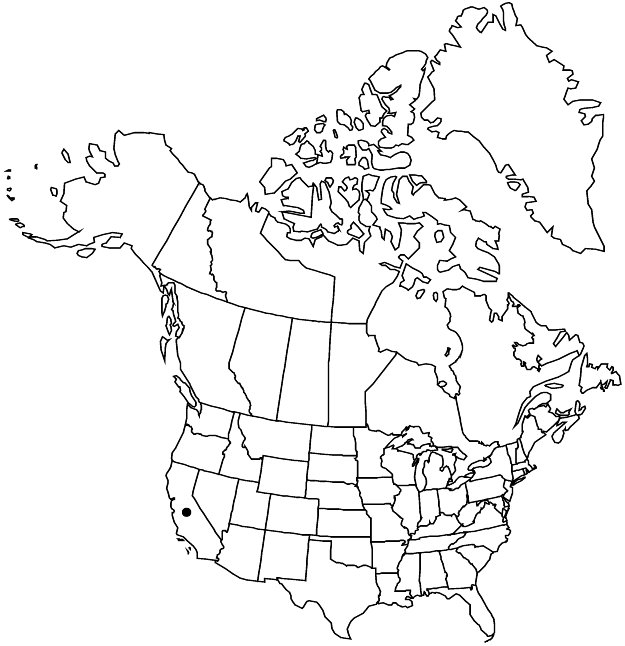Eriogonum evanidum
Phytologia 86: 132. 2004.
Herbs, erect, 1–2 dm, tomentose to floccose, grayish. Stems: aerial flowering-stems erect, 0.3–0.6 dm, tomentose to floccose. Leaves basal; petiole 0.5–1.5 cm, tomentose; blade broadly ovate to orbiculate or reniform, 0.7–1.2 × 0.7–1.2 cm, densely white-tomentose abaxially, floccose and greenish adaxially. Inflorescences narrowly cymose, infrequently distally uniparous due to suppression of secondary branches, open, 5–15 × 5–10 cm; branches tomentose to floccose; bracts 0.5–2 × 0.5–1 mm. Peduncles absent. Involucres somewhat appressed to branches, campanulate, 1–2 × 1–2 mm, glabrous; teeth 5, spreading, 0.4–0.8 mm. Flowers 0.8–1.2 mm; perianth ochroleucous, glabrous; tepals dimorphic, those of outer whorl ovate, slightly hastate proximally in fruit, those of inner whorl lanceolate to elliptic; stamens included, 0.4–0.6 mm; filaments glabrous. Achenes dark-brown, 3-gonous, 1.3–1.5 mm.
Phenology: Flowering Jul–Oct.
Habitat: Sandy to gravelly flats and slopes, sagebrush communities, oak and montane conifer woodlands
Elevation: 1100-2100 m
Distribution

Calif., Mexico (Baja California)
Discussion
Of conservation concern.
Eriogonum evanidum is presumed extinct. The last known collections were made in Bear Valley in the San Bernardino Mountains, San Bernardino County, in 1931 (Templeton 1588, BRY, KANS, NY); Hemet Valley in the San Jacinto Mountains, Riverside County (Ziegler s.n., 10 Oct 1967, GH, RSA, UC, UTC); and the Pine Valley area, San Diego County, in 1938. It is related to two sprawling annual Mexican species with mostly elliptic basal leaf blades: E. foliosum S. Watson, with weakly hastate cauline leaves, and E. hastatum Wiggins, with strongly hastate cauline leaves.
Selected References
None.
Lower Taxa
"narrowing" is not a number."dm" is not declared as a valid unit of measurement for this property.